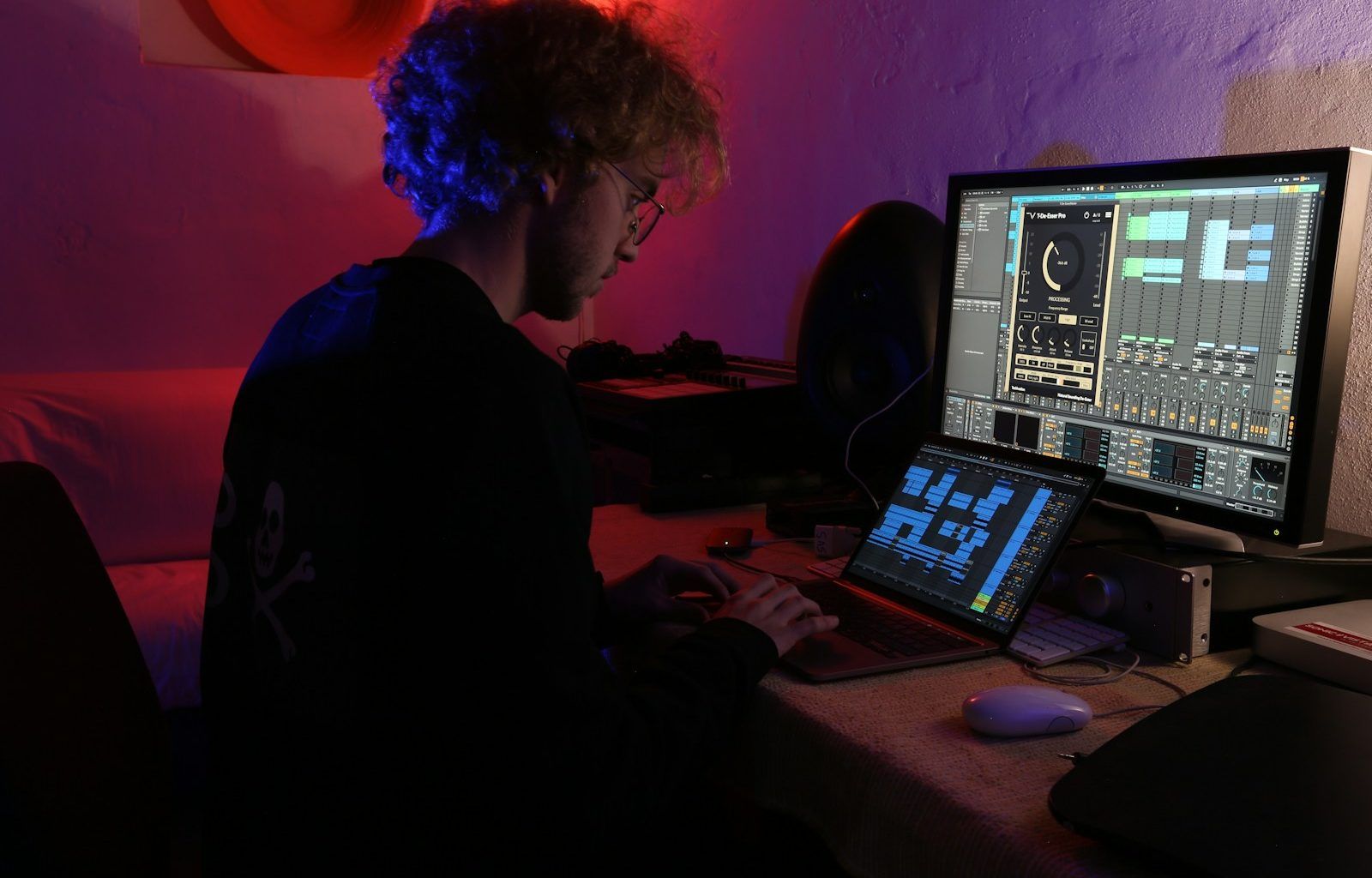Electronic music production has seen a meteoric rise in popularity over the years. Whether you’re a budding bedroom producer or a seasoned professional, the software you use can make or break your creativity. Choosing the best program for producing electronic music is one of the most crucial decisions you’ll make as a music producer. But with so many options out there, how do you know which one is right for you?
In this blog, we’ll explore some of the top programs for electronic music production, diving into their unique features, pros, and cons. Along the way, you’ll get tips on how to make the best choice for your needs, regardless of your skill level.
What Makes a Program Ideal for Electronic Music Production?
Before we dive into specific programs, let’s take a moment to understand what sets a music production program apart for electronic music. Unlike traditional recording setups, electronic music heavily relies on digital sound manipulation, synthesizers, and sample libraries. Here are some features to look for:
- Intuitive Workflow: A user-friendly interface that doesn’t get in the way of your creativity.
- Advanced MIDI Editing: Precision tools for sequencing and controlling MIDI.
- High-Quality Built-In Instruments and Effects: Access to synths, drum machines, and audio effects.
- Extensive Plugin Support: Compatibility with third-party VSTs and AU plugins.
- Flexible Automation Tools: For fine-tuning parameters and creating dynamic tracks.
Now that we know what to look for, let’s explore some of the best programs for producing electronic music.
Ableton Live – The Industry Standard
If you’ve spent any time in the electronic music world, you’ve probably heard of Ableton Live. Widely regarded as the best program for producing electronic music, Ableton Live is a powerhouse that combines ease of use with deep functionality.
Key Features
- Session View: Ideal for live performances and improvisation.
- Extensive Library: Includes a vast array of instruments, effects, and loops.
- Max for Live Integration: Unlocks additional creative possibilities.
- Warping Capabilities: Time-stretching audio with precision.
Why Choose Ableton Live?
Ableton Live’s intuitive interface makes it a favorite among both beginners and professionals. The Session View is particularly appealing for electronic music producers who perform live. Whether you’re crafting beats, designing synth patches, or manipulating samples, Ableton Live has the tools you need.
Drawbacks
- The price can be steep, especially for the Suite version.
- The interface might take time to master for absolute beginners.
FL Studio – A Beginner’s Dream
FL Studio, also known as FruityLoops, has been a go-to choice for electronic music producers for decades. Its colorful interface and drag-and-drop simplicity make it an excellent option for newcomers.
Key Features
- Step Sequencer: Perfect for creating drum patterns quickly.
- Lifetime Free Updates: You’ll never have to pay for a new version.
- Wide Plugin Support: Includes tools like Sytrus and Harmor.
- Piano Roll: Renowned for its precision and ease of use.
Why Choose FL Studio?
If you’re just starting, FL Studio is one of the best programs for producing electronic music. It’s affordable, easy to learn, and comes with plenty of resources to help you grow. Plus, the lifetime free updates mean you’ll always have access to the latest features.
Drawbacks
- Limited audio recording capabilities compared to other DAWs.
- Some advanced features might not be as robust as competitors.
Logic Pro – The Apple Enthusiast’s Choice
For Mac users, Logic Pro is often the best program for producing electronic music. Known for its sleek interface and powerful tools, Logic Pro is a favorite among professionals.
Key Features
- Extensive Sound Library: Thousands of loops, samples, and instruments.
- Drummer Feature: AI-driven drum tracks that adapt to your style.
- Alchemy Synthesizer: A powerful tool for sound design.
- Seamless Integration: Works flawlessly with macOS.
Why Choose Logic Pro?
Logic Pro offers exceptional value for its price. The combination of advanced features and an intuitive interface makes it a solid choice for electronic music producers who value efficiency and creativity.
Drawbacks
- Only available on Mac, which might be a dealbreaker for Windows users.
- The learning curve can be steep for beginners.
Bitwig Studio – The Innovator’s Playground
Bitwig Studio is a relatively new player in the world of music production, but it’s quickly gaining traction among electronic music producers. Designed with innovation in mind, Bitwig Studio excels in modular sound design.
Key Features
- Modular Environment: Flexible routing and modulation.
- Clip Launcher: Similar to Ableton’s Session View.
- Cross-Platform Compatibility: Works on Windows, Mac, and Linux.
- Dynamic Interface: Highly customizable to suit your workflow.
Why Choose Bitwig Studio?
If you’re into experimental music and sound design, Bitwig Studio might be the best program for producing electronic music. Its modular system and innovative features make it a favorite among cutting-edge producers.
Drawbacks
- Smaller user base, which means fewer tutorials and resources.
- Can be expensive compared to similar programs.
Pro Tools – For the Professional Producer
While Pro Tools is traditionally associated with audio recording and mixing, it’s also a capable program for electronic music production. Its robust tools and high-quality sound make it a choice for serious professionals.
Key Features
- Industry Standard: Used in top studios worldwide.
- Advanced Mixing Tools: Perfect for finalizing tracks.
- Third-Party Plugin Support: Works with most VSTs and AAX plugins.
- High Audio Quality: Ideal for mastering electronic tracks.
Why Choose Pro Tools?
If you’re planning to collaborate with other professionals or work in a studio environment, Pro Tools might be the best program for producing electronic music. Its mixing and mastering capabilities are unparalleled.
Drawbacks
- The subscription model can be expensive.
- The interface may feel overwhelming for beginners.
Tips for Choosing the Best Program for Producing Electronic Music
With so many options, how do you decide which program is right for you? Here are some tips:
- Consider Your Goals: Are you making music for fun, or do you want to turn it into a career?
- Test Demos: Most programs offer free trials. Use them to see which interface feels right.
- Budget Wisely: Invest in a program that fits your budget but doesn’t skimp on essential features.
- Think About Compatibility: Make sure the program works on your operating system and supports your hardware.
- Research Tutorials: A program with plenty of online resources will make your learning journey easier.
Conclusion
Choosing the best program for producing electronic music is a personal journey. Whether you’re drawn to the versatility of Ableton Live, the beginner-friendly FL Studio, or the cutting-edge features of Bitwig Studio, there’s a DAW out there for every producer. Take your time, explore your options, and don’t be afraid to experiment. After all, electronic music is all about pushing boundaries and finding your unique sound.
For further reading, explore these related articles:
- The Journey of “Gangnam Style”: A Song That Made the World Dance
- Exploring Imagine Dragons Songs: Music That Touches the Heart
For additional resources on music marketing and distribution, visit DMT Records Pvt. Ltd..






